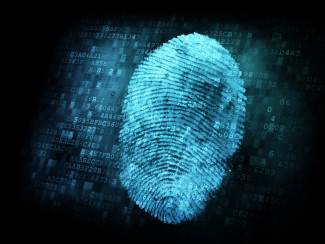
Johns Hopkins UniversityEst. 1876
America’s First Research University
The Guts of Rights: Forensics in the World Reveals All

What is odd about forensic cultures is their overwhelming presence in popular outlets (at almost any hour a channel-flipper will find a forensic wallow) and their simultaneous invisibility from most domains of scholarship, particularly from historical and comparative studies of institutions. A moment’s reflection will make clear that what we now know as forensic inference is not new: somebody with some manner of expertise draws conclusions about some problematic incident (often an unexpected death). There are consequences that a community needs to work out: in determining degrees of culpability, resolutions will be possible. Justice will have been seen to be done, which, after all, is what states are responsible for.
And yet we know much more about great legal decisions or even about great advocacy than about the minutiae of forensic methods. There are exceptions – the memoirs of top forensic pathologists recounting their ingenious unraveling of a few sensational cases, for example. There are reasons for this neglect: the matters are complicated; technicians work behind the scenes; and rights are supposed not to be dependent on mere technology.
But in short, when with Neil Pemberton, Ian Burney, and I convened an international group of scholars in London four summers ago with the support of the Wellcome Trust and the University of Notre Dame, we had little idea of what to expect. Ian’s interests in forensic matters had evolved from an exploration of the political culture of the English coroner’s inquest, through an exploration of cultures of poisoning, to a study, with Neil, on the cultural origins of Crime Scene Investigation. Some of my own early research had dealt with the question of opposing experts in forensic contexts – could their contradiction be compatible with the accepted conduct of science? That problem, which confronts us still, had been broached already in the mid-nineteenth century.

For the most part, those who came to London did not know one another. Ian or I had met them in many contexts. Many were younger scholars who had found in their studies of culture, governance, professionalization, or nation-building, revealing forensic case studies. They represented many regions as well as approaches; included professional historians as well as practitioners. Our schedule included ample time for discussions of convergences; from these unexpected themes leapt out. I’ll mention six:
- Colonial governance. Until we assembled several colonial case studies, it had not been clear how much colonial governance provided a forcing bed for forensic innovation. Struggling to govern subject populations, colonial powers sought physical facts to substitute for testimony they did not trust.
- Race. A promise of modern forensics has been to overcome racism in criminal justice. Yet the studies in the book show that forensic techniques were often used to reinforce racism in myriad ways.
- Professional status. Modern critics worry that forensic sciences are often poorly grounded in relevant basic science; the case studies suggest how that came to be as maverick forensic innovators found or built institutional niches and passed their skills on to new generations.
- Local and personal knowledge. While we tend to think of forensics as objective, often important expertise is embodied – vital skills may not translate into texts.
- Governmentality. Forensics has usually implied a criminal context; but the techniques of identification and surveillance have become part of the routine of government, used both to prevent crime and to quickly locate persons.
- Feedbacks with popular culture, law, state-making. It is common to see forensics as deriving from law and to see forensic popular culture as dependent on forensic science. The case studies show different and more complex feedbacks, with popular culture affecting forensic and legal practices and even state-making.
Forensics sciences exist everywhere and always. Their neglect by historians should stop. We wrote Global Forensic Cultures to launch a research gold rush. Each of the cases suggests analogous studies in other settings that will bring awareness of the many ways science operates in maintaining order and creating justice.
Ian Burney is the director of the University of Manchester's Centre for the History of Science, Technology, and Medicine. He is the author of Bodies of Evidence: Medicine and the Politics of the English Inquest, 1830–1926 and a coauthor of Murder and the Making of English CSI. Christopher Hamlin is a professor of history at the University of Notre Dame. He is the author of More than Hot: A Short History of Fever. Together, Burney and Hamlin are the editors of Global Forensic Cultures: Making Fact and Justice in the Modern Era.


